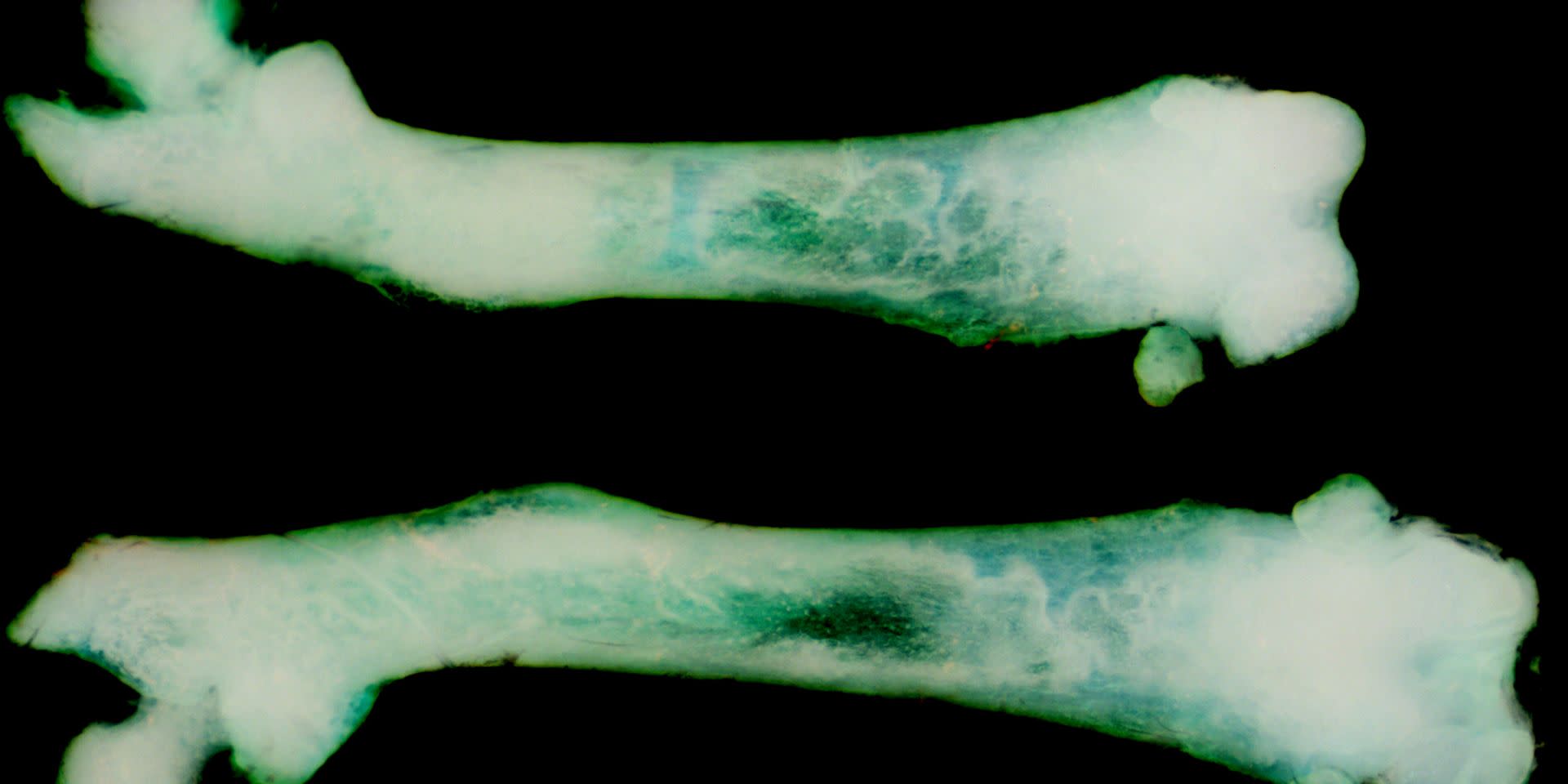New Monash University senior research fellow, molecular biologist Dr Alberto Roselló-Díez, has recently come to Melbourne from Sloan-Kettering Institute in New York. There, he was among a team of researchers who made a breakthrough in studies of growth disorders and dwarfism, and he'll continue this research in his new lab at Monash’s Australian Regenerative Medicine Institute (ARMI).
According to a study published in PLOS Biology, mice can stimulate rapid growth in one limb while suppressing their overall growth, allowing damaged tissues to play catch-up with other tissues, and making sure that bones in opposite limbs lengthen together to achieve symmetry.
Maintaining equal growth rates in opposing limbs is crucial for animals to form symmetrically as an adult, but what happens if something goes wrong with one limb during development?
It’s hoped these new insights into how the body’s mechanisms work to regulate growth may lead to therapies for genetic growth disorders such as dwarfism or fetal growth restriction.
How does the body regulate growth to cope with injury or deformity?
It’s already known that after local injury, insects regenerate through compensatory multiplication of cells in the injured body part and growth delay in other parts of the body, but in vertebrates the same responses haven’t been clear.
To explore more in vertebrates, the authors engineered mice cells, shortly before birth, specifically in bone-forming cartilage cells in one hind limb, but not the other. By suppressing only half of the bone-forming cartilage cells in the same hind leg, they were able to examine the responses of unsuppressed cells on the same side.

They found that, within the targeted limb, those cells that weren’t suppressed grew more than normal to compensate, so that overall growth on the affected side was only mildly slowed.
Put simply, the ‘healthy’ or ‘unsuppressed’ cells multiplied rapidly until they had replaced most of the ‘damaged’ or ‘suppressed’ cells.
The signal that drove this hyper-proliferation isn’t yet clear, but opens new avenues of research.
Could this lead to potential therapies to treat dwarfism and growth disorders?
A better understanding of the mechanics that triggered this response, both in the injured limb and the regulation of overall growth, could lead to potential therapies for genetic growth disorders such as achondroplasia, a very common form of dwarfism, or leg length discrepancy, characterised by unequal lower limb length.
The mice were engineered to exhibit a cell cycle suppressor (p21) in the growth cartilage of the hind limb to replicate one of the features of achondroplasia.
In humans born with the condition, the cartilage in places such as the arms and legs doesn’t grow and transform into bone the way it should.
“As long as the intervention is done early, such that there is still growth plate in the bones, there is hope for a corrective treatment. Down the road, I envision therapies that will help people with growth disorders,” Dr Roselló-Díez said.
“We envisage therapies in which you can correct growth limitations, by using pluripotent cells derived from the patient and turning them into new corrective cells before implanting them back into the cartilage.
“The way it would work in the achondroplastic patient is that the mutant cells would not proliferate but the corrective cells would, eventually replacing the mutant cells, just like we saw in the mice.”
With the avenues for research this has opened, Dr Roselló-Díez hopes such therapies might eventually be available to humans – though he says the road ahead is long and winding.
The placenta plays a role in slowing overall growth so injured limbs can play catch-up
The research team also found that the placenta likely acts as a central regulator of the body’s overall and proportional growth during mouse embryo development.
In response to the slowing of growth in the injured limb, there was a systemic reduction in the rate of overall growth that correlated with an impairment of insulin-like growth signalling in the placenta.
“The placenta seems to respond somehow to the stress that the limb is placed under, and that slows down the growth of the rest of the body,” Dr Roselló-Díez said.
“It’s very fascinating how the placenta and the limbs talk to each other to trigger this response, and is something we will investigate further in my new lab at Monash.”






